Cincinnati Water Quality at a Glance
some concerns
Is Cincinnati Water Safe to Drink?
Generally Yes – Cincinnati water consistently meets or exceeds all federal and state standards, and GCWW ranks #1 by J.D. Power for quality. However, PFAS contamination exists at the Bolton Plant (serving ~12% of customers) with levels above proposed EPA limits. Disinfection byproducts from chlorination exceed health guidelines by significant margins. The Ohio River source is classified as “highly susceptible to contamination.”
⚠️ Key Concerns for Cincinnati Residents
- PFAS “Forever Chemicals”: Bolton Plant (12% of customers) detected PFOA and PFOS above proposed EPA limits
- Disinfection Byproducts: Trihalomethanes and haloacetic acids from chlorination exceed EWG health guidelines
- Chromium-6: Hexavalent chromium detected at levels 5.9 times higher than health recommendations
- Lead Service Lines: Over 35,000 lead service lines still need replacement throughout the system
Read the full report below for detailed analysis, plant-specific data, and actionable recommendations for Cincinnati residents.
Cincinnati – Ohio – Water Quality Report 2025: PFAS Testing, Infrastructure Concerns & Safety across your city
Greater Cincinnati Water Works (GCWW) serves over 1.1 million customers across the greater Cincinnati metropolitan area, including Hamilton County and parts of Butler, Warren, Clermont, and Boone counties. The utility manages approximately 3,100 miles of water mains, two major drinking water treatment plants, and multiple reservoirs, delivering an average of 132 million gallons daily to this historic Ohio River city.
Cincinnati draws its drinking water primarily from the Ohio River (88% of supply) and the Great Miami Buried Valley Aquifer (12% of supply), providing both surface and groundwater sources for enhanced reliability. GCWW operates the Richard Miller Treatment Plant for river water and the Charles M. Bolton Treatment Plant for groundwater, creating a dual-source system with exceptional resilience. Cincinnati has earned recognition for water quality excellence, particularly for its pioneering use of granular activated carbon and UV disinfection technologies. The city has invested significantly in water infrastructure improvements, focusing on treatment advancements, distribution system upgrades, and source water protection to ensure safe, reliable drinking water for this major Midwest urban center.
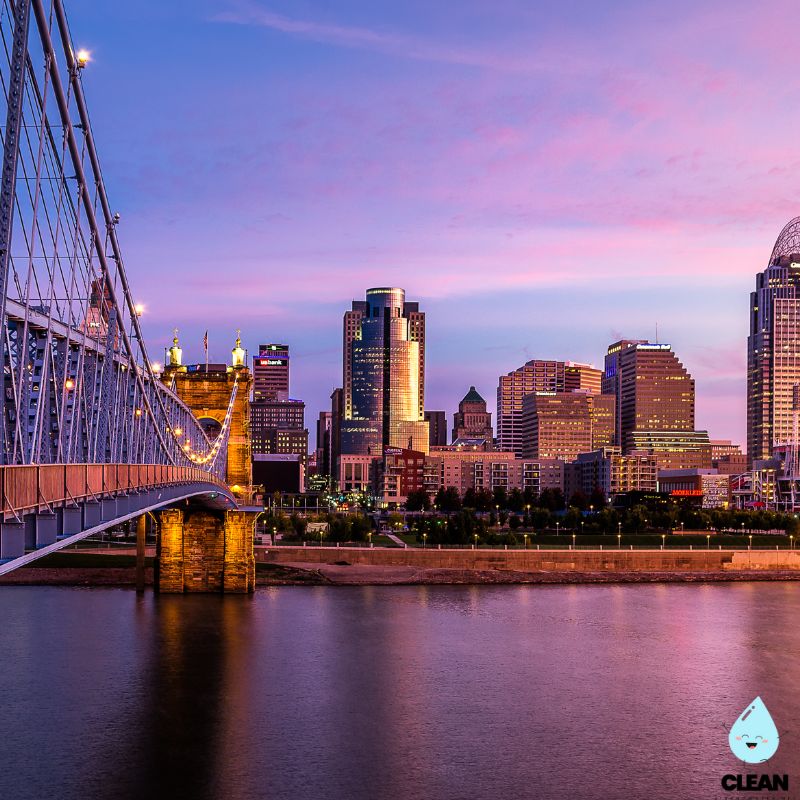
Cincinnati Water Quality: Current Status (2024-2025)
Latest Testing Results
- Lead Levels: The most recent testing period (January-December 2024) showed 90th percentile lead levels of 1.12 parts per billion (ppb) in the first half and 2.32 ppb in the second half, significantly below the EPA action level of 15 ppb, reflecting Cincinnati’s industry-leading corrosion control program and extensive lead service line replacement initiatives.
- Testing Scope: GCWW conducts over 600 water quality tests daily, monitoring more than 100 potential contaminants through its comprehensive Quality Water Analysis program that exceeds federal and state requirements.
- Compliance Status: Cincinnati’s water meets or exceeds all federal and state drinking water standards, maintaining perfect compliance with EPA and Ohio EPA regulations, with GCWW ranked #1 by J.D. Power for water quality for the second consecutive year.
Dual-Source Water Supply
- Ohio River: Primary source (approximately 88% of supply) with intake points strategically located upstream of the metropolitan area to minimize urban impact on source water quality.
- Great Miami Buried Valley Aquifer: Secondary source (approximately 12% of supply) providing naturally filtered groundwater through 13 wells, offering reliability during river quality challenges or drought conditions.
- Watershed Protection: Active participation in the Ohio River Valley Water Sanitation Commission (ORSANCO) and source water protection partnerships spanning multiple states to monitor and protect water quality throughout the watershed.
Advanced Treatment Excellence
- Multi-Barrier Treatment: Richard Miller Treatment Plant employs advanced processes including coagulation/flocculation/sedimentation, sand filtration, granular activated carbon filtration, UV disinfection, and chlorine treatment to address a broad spectrum of potential contaminants.
- Granular Activated Carbon: The Richard Miller Plant uses large-scale GAC technology, which effectively removes organic compounds, pharmaceuticals, PFAS, and taste/odor compounds through adsorption. However, the Charles M. Bolton Plant does not utilize GAC technology, which may result in higher PFAS levels for customers served by this facility.
- Enhanced Corrosion Control: Industry-leading corrosion control treatment program prevents lead and copper leaching from pipes, with optimization based on comprehensive water chemistry monitoring throughout the distribution system.
Infrastructure Investment
- Lead Service Line Replacement: Comprehensive program that has removed over 15,000 lead service lines since the program began, with over 35,000 lead service lines still requiring replacement throughout the system.
- Smart Water Technology: Implementation of advanced metering infrastructure, predictive maintenance systems, and real-time water quality monitoring to optimize system performance and quickly address emerging issues.
- System Infrastructure: GCWW maintains over 3,100 miles of water mains and delivers an average of 132 million gallons daily, with ongoing investments in system upgrades and expansion to meet regional growth.
River Management and Climate Resilience
Cincinnati has developed a forward-looking approach to water management considering the unique challenges of the Ohio River system. The Ohio EPA has classified the Ohio River as “highly susceptible to contamination” due to its surface water nature and exposure to environmental factors. GCWW has implemented early warning systems for river contamination events, including enhanced real-time monitoring stations at strategic locations upstream of water intakes. Cincinnati’s treatment facilities have been designed with built-in redundancy and operational flexibility to handle fluctuations in river water quality during extreme weather conditions. The city’s dual-source approach enhances resilience, allowing transitions between river water and groundwater during challenging river conditions or in response to upstream spill events, ensuring continuous delivery of safe drinking water regardless of environmental changes.
Recommendations for Cincinnati Residents

Check Your Service Line
Use GCWW’s online tool or call (513) 591-7700 to determine if your home has a lead service line and which treatment plant serves your area. Cincinnati offers free lead testing kits and provides information about lead service line replacement programs, with over 35,000 lead service lines still requiring replacement throughout the system.
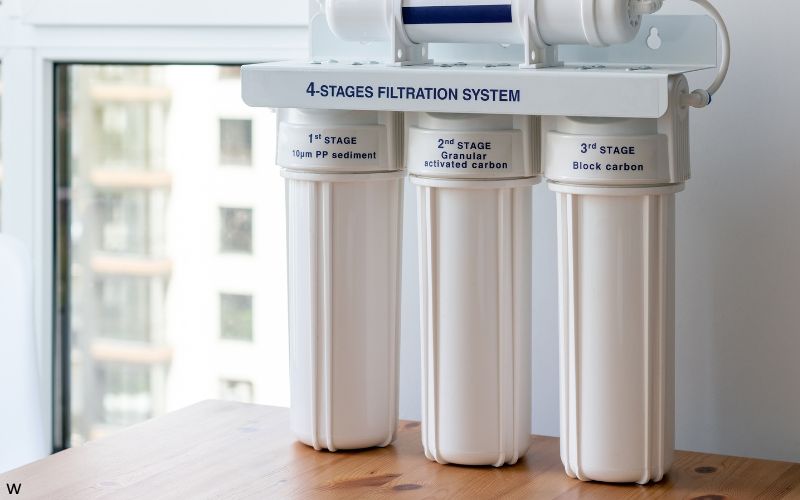
Filter If Necessary
If you have a lead service line, are served by the Bolton Plant, or want to reduce disinfection byproducts, use NSF-certified filters (Standard 53) for drinking and cooking water. For PFAS removal, consider filters certified for PFAS or reverse osmosis systems, particularly if served by the Bolton Plant where PFAS levels are detectable.
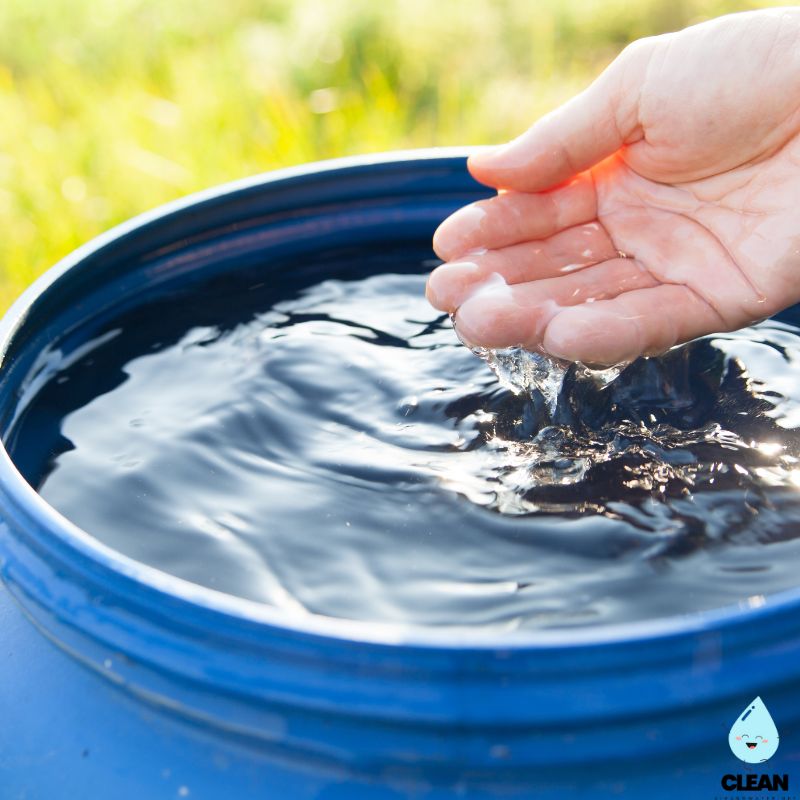
Participate in Conservation
Take advantage of Cincinnati’s water conservation incentives, including rebates for water-efficient appliances and fixtures. GCWW’s sustainable water use program offers free irrigation assessments and rain barrel workshops to promote responsible water stewardship.

Flush After Home Plumbing Work
After any plumbing work or extended periods of non-use (one week or more), run cold water for 3-5 minutes to flush stagnant water from pipes. For homes with lead service lines, GCWW recommends more thorough flushing procedures, and customers can call 513.651.LEAD for specific guidance.
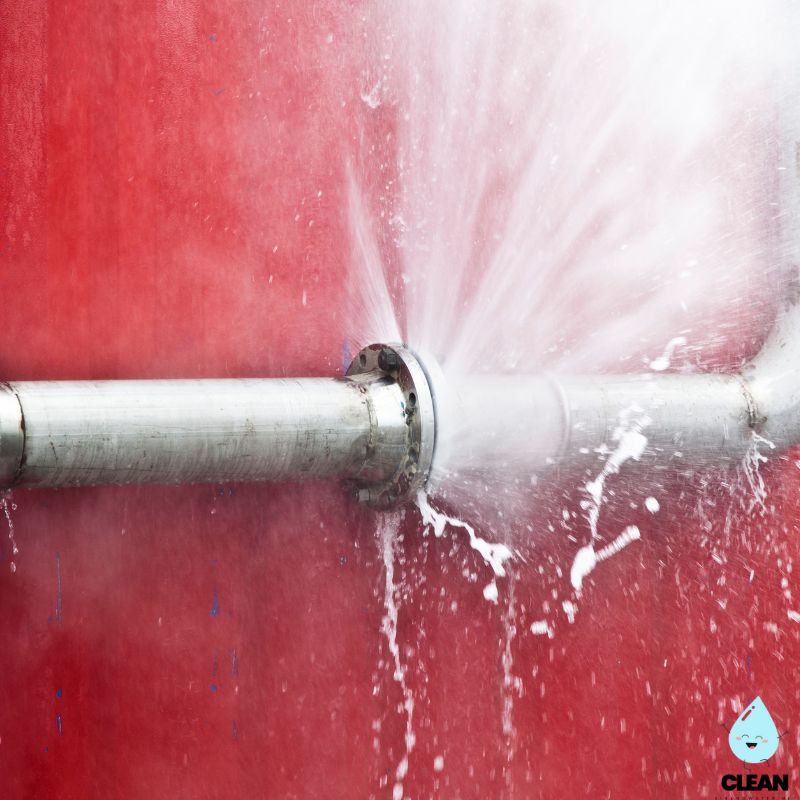
Sign Up for Alerts
Register for GCWW’s customer notification system to receive timely alerts about water main breaks, planned service disruptions, or other water quality advisories in your specific area. Alerts are available via text message, email, or phone call based on your preferences.
Quality News About Your Water
Get the comprehensive water quality news coverage you need with our dedicated US Water News Service. From coast to coast, we deliver in-depth reporting and expert analysis on PFAS contamination, EPA regulatory changes, infrastructure developments, and emerging water safety issues affecting communities nationwide. While mainstream media only covers the biggest stories, we provide the detailed, ongoing coverage that helps you understand the full scope of America’s water challenges. Whether you’re a concerned citizen, water professional, or community leader, our daily updates and analytical insights keep you informed about the issues that matter most to public health and environmental safety.
Frequently Asked Questions
Is Cincinnati’s tap water safe to drink?
Yes, Cincinnati’s tap water consistently meets or exceeds all federal and state drinking water standards and has been ranked #1 by J.D. Power for water quality for two consecutive years. The city’s water undergoes extensive treatment at two treatment plants: the Richard Miller Treatment Plant (serving 88% of customers) and the Charles M. Bolton Treatment Plant (serving 12% of customers).
GCWW conducts over 600 water quality tests daily, monitoring for more than 100 potential contaminants with rigorous analytical methods. Cincinnati maintains perfect compliance with EPA standards and has received recognition for its outstanding treatment processes.
However, customers should be aware that water quality characteristics vary between the two treatment plants. The Miller Plant’s granular activated carbon provides superior protection against emerging contaminants like PFAS, while customers served by the Bolton Plant may experience slightly different water quality profiles, including detectable PFAS levels above proposed EPA limits.
How does Cincinnati manage Ohio River water quality variations?
Cincinnati employs a multi-faceted approach to manage Ohio River water quality fluctuations, though the Ohio EPA has classified the Ohio River as “highly susceptible to contamination” due to its surface water nature:
• Early Warning System: GCWW operates an extensive network of real-time monitoring stations upstream of our water intakes to provide advance notice of any water quality changes
• Adaptable Treatment: The Richard Miller Treatment Plant can rapidly adjust treatment processes based on incoming water quality, with automated systems that optimize chemical dosing and filtration
• Source Water Switching: During significant river quality challenges, GCWW can transition to its groundwater source from the Great Miami Buried Valley Aquifer
• Regional Collaboration: Active participation in ORSANCO and the Ohio River Drinking Water Protection Network enables coordinated responses to watershed events
• Advanced Treatment Barriers: Multiple treatment processes provide redundant protection, with granular activated carbon and UV disinfection offering exceptional capability to address a wide range of potential contaminants
These systems have successfully maintained water quality through major river events, including floods, droughts, algal blooms, and upstream industrial spills.
What is Cincinnati doing about lead service lines?
Cincinnati has implemented one of the nation’s most progressive lead service line replacement programs:
• Replacement Progress: Over 15,000 lead service lines have been replaced since the program began, but more than 35,000 lead service lines still require replacement throughout the system
• Free Testing: Cincinnati offers complimentary lead testing kits to all customers upon request
• Current Performance: Recent testing shows 90th percentile lead levels of 1.12-2.32 ppb in 2024, well below the EPA action level of 15 ppb
• Lead Information Line: Customers can call 513.651.LEAD for lead service line information and testing kit requests
• Industry-Leading Corrosion Control: Optimized corrosion control treatment effectively prevents lead leaching from remaining lead service lines while replacement work continues
• Coordinated Construction: Lead line replacements are synchronized with street and infrastructure projects to minimize disruption and maximize efficiency
This comprehensive approach has resulted in consistently low lead levels in Cincinnati’s water, with recent testing showing levels well below the EPA action level of 15 ppb.
Why is Cincinnati’s water treatment considered advanced?
Cincinnati has earned recognition for its pioneering water treatment approaches:
• Granular Activated Carbon: The Richard Miller Plant was one of the first major utilities to implement large-scale GAC filtration, which provides superior removal of organic compounds, pharmaceuticals, PFAS, pesticides, and taste/odor compounds
• UV Disinfection: GCWW operates one of the largest drinking water UV treatment facilities in North America, providing additional protection against chlorine-resistant microorganisms like Cryptosporidium and Giardia
• Multi-Barrier Approach: Treatment includes coagulation, flocculation, sedimentation, sand filtration, GAC, UV disinfection, and chlorine disinfection—creating multiple protective barriers against various contaminants
• Research Partnerships: GCWW maintains an active research program with the EPA, Water Research Foundation, and regional universities to evaluate emerging treatment technologies and water quality challenges
• Real-Time Monitoring: Advanced sensor networks throughout the treatment process allow immediate adjustments based on changing water conditions
These innovative approaches have established Cincinnati as a national leader in water treatment technology and consistently earn GCWW recognition for exceptional water quality.
Contaminants of Concern
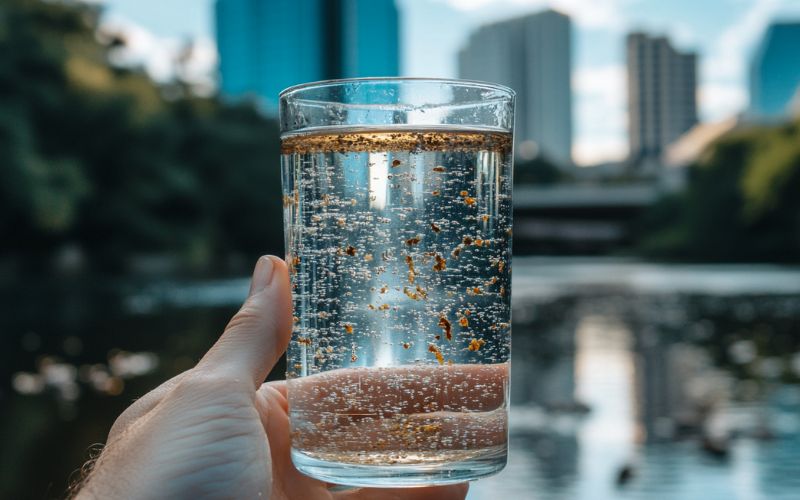
PFAS Compounds
Source: Industrial processes, firefighting foams, and consumer products that may enter the Ohio River watershed from multiple states upstream of Cincinnati, as well as local sources affecting groundwater
Health Effects: Potential links to increased cholesterol levels, changes in liver enzymes, decreased vaccine response in children, and increased risk of certain cancers with long-term exposure to high levels
Current Status: Miller Plant (88% of customers): PFAS not detected in treated water due to GAC filtration. Bolton Plant (12% of customers): PFOA at 3.9 ppt and PFOS at 4.2 ppt, near proposed EPA regulatory limits of 4.0 ppt
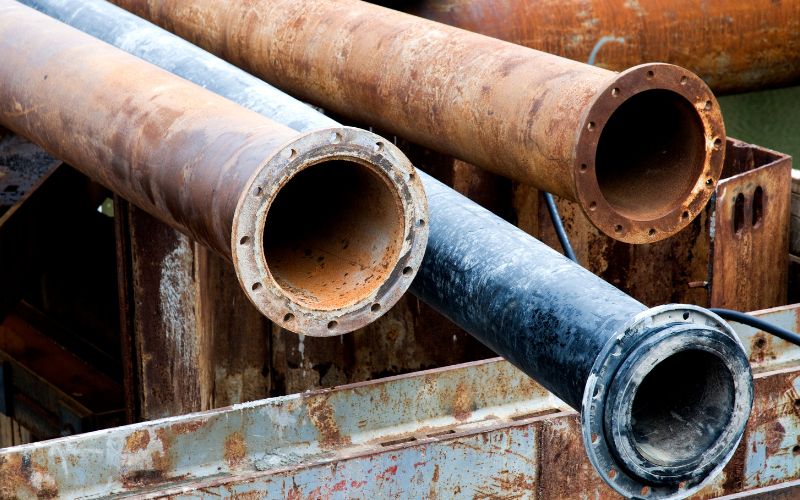
Lead
Source: Lead service lines and older plumbing materials in homes built before 1986; Cincinnati has over 35,000 remaining lead service connections that still require replacement
Health Effects: Developmental delays in children, reduced IQ, learning difficulties, kidney problems, and cardiovascular effects in adults
Current Levels: 90th percentile value of 1.12 ppb (first half 2024) and 2.32 ppb (second half 2024), well below EPA action level of 15 ppb EPA Limit: Action level 15 ppb, but no level of lead is considered safe
Please read – our information
The information presented on cleanairandwater.net is compiled from official water quality reports, trusted news sources, government websites, and public health resources. While we strive for accuracy and thoroughness in our presentations, we are not scientists, engineers, or qualified water quality professionals.
Our mission is to present water quality information in an accessible, real-world format that helps people understand what’s in their water and make informed decisions about their health and safety. We believe that complex environmental information should be available to everyone in a format that’s easy to understand.
We make every effort to ensure our content is current and accurate, but we cannot guarantee that all information is complete or error-free. This website should not replace official communications from your local water utility or health department. We always recommend consulting official sources for the most up-to-date information regarding your specific water system.
Clean Air and Water is not liable for any unintentional errors, omissions, or outdated information. The content on this site is provided for informational purposes only and should not be considered professional advice.


